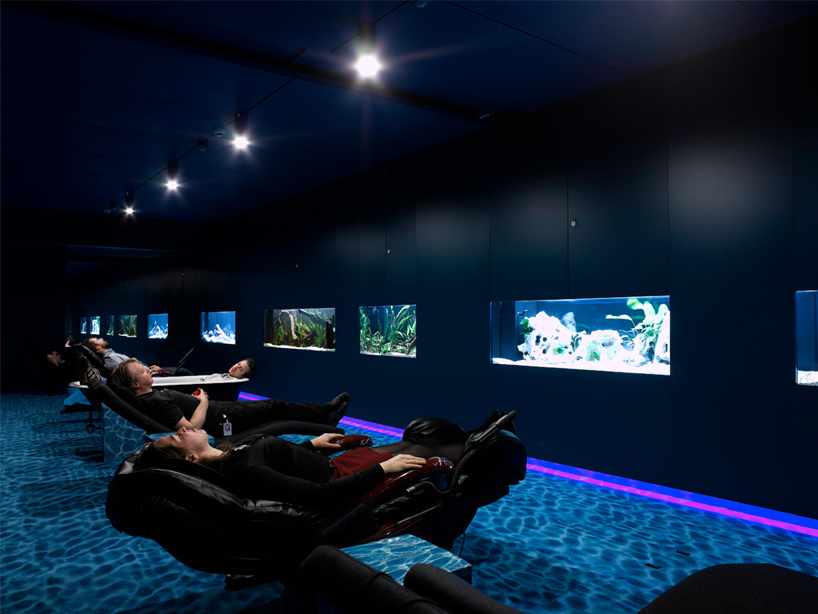American workers are known for their productivity, and while we aren’t number one on many lists, we remain in the top five overall on nearly all of them.
So it’s kind of shocking to me to read the results of a Gallup Poll from June 2017 which found two-thirds of all employees in the United States say they are “not engaged” or “actively disengaged” at work. These employees aren’t applying themselves. They are just getting by. Most of the time they are checked out. Presenteeism is a new term defining employees that are present, but not engaged.
This is not a small thing. Disengaged employees cost $450 to $550 billion every year in lost productivity in the U.S. through absenteeism, workplace accidents, and health care costs, to say nothing of costing more in labor costs to accomplish their job.

You can improve the productivity of disengaged employees by applying biophilic design and biomimicry prinicples.
Gallup defines “engaged” employees as people who feel they have an opportunity to do what they do best each day, have someone at work who encourages their development, believe their opinions count and are involved in, enthusiastic about and committed to their work.
Companies and organizations spend a lot of time trying to figure out how to keep their employees engaged. It’s the workplace Holy Grail. But even the most productive companies can only hit about 40 percent engagement.
When I’m trying to solve a problem, I look to Nature for answers. It turns out Nature might hold the key to workplace productivity through Biomimicry.
Biomimicry is an approach to innovation seeking sustainable solutions to human challenges by emulating nature’s patterns and strategies. The goal is to create products, processes, and policies which are well-adapted to life on earth over the long term.
What can nature teach us about working better? In Nature, everything is fully engaged. Everything in Nature has an assigned purpose and its skills are directed toward that purpose. If any small improvement can be found by design or by accident, it is incorporated. Nature is all about unlimited potential.
Nature also solves problems as a whole. It “shares” its ways of innovative thinking in collective creativity. No one needs to own or get credit for an idea in Nature. If it’s useful, everyone shares. Sustainability is the goal and sustainability pushes toward innovation.
No one in Nature needs to ask permission to improve on a process or try something which might lead to a breakthrough. If it works, great. If not, learning occurs and the information is still very useful.
Right now, people in the workplace are separated from Nature both literally and figuratively. There are leaders and followers, winners and losers, blame and credit. In Nature, there is creativity and innovation, curiosity and curating, adaptation and sharing.
People, products and processes all evolve. Why get in the way of this? Workplaces have guidelines and rules but sometimes these need to be flexible enough to change and adapt.
This approach is the topic of a new book I’m happy to recommend for people who would like to learn more about the topic. “[Re]Aligning With Nature: Ecological Thinking for Radical Transformation” is written by Denise DeLuca, the co-founder of BCI: Biomimicry for Creative Innovation in Seattle, Washington. She also teaches Creative Leadership and Biometric Design at the Minneapolis College of Art and Design.
Denise teaches Biomimicry to businesses around the world. Her new book covers many of the basic principles from nature that she translates to business.
Denise says businesses, like Nature, need to adapt and change, and need to be open to adapting and changing in a collaborative way. When they don’t, failing to change equals failure.
How about starting with biophilic design reconnecting people with nature where we live and work? Researchers says customers are more likely to enter areas with greenery or water. We know hospital patients recover more quickly and experience less pain when they have a view of nature outside their room. Students in schools with natural elements get higher test scores. Workplaces with natural elements can save as much as $3,000 per employee in reduced healthcare costs. Applying the principles of biophilic design is a smart investment in employee health, well-being and productivity.
We can help you explore the possibilities at Good Earth Plant Company with beautiful indoor plants, moss and living walls and roof top gardens. We’d love to explore and work with you. Get in touch with us and let’s work together to improve your wellbeing and your bottom line.


